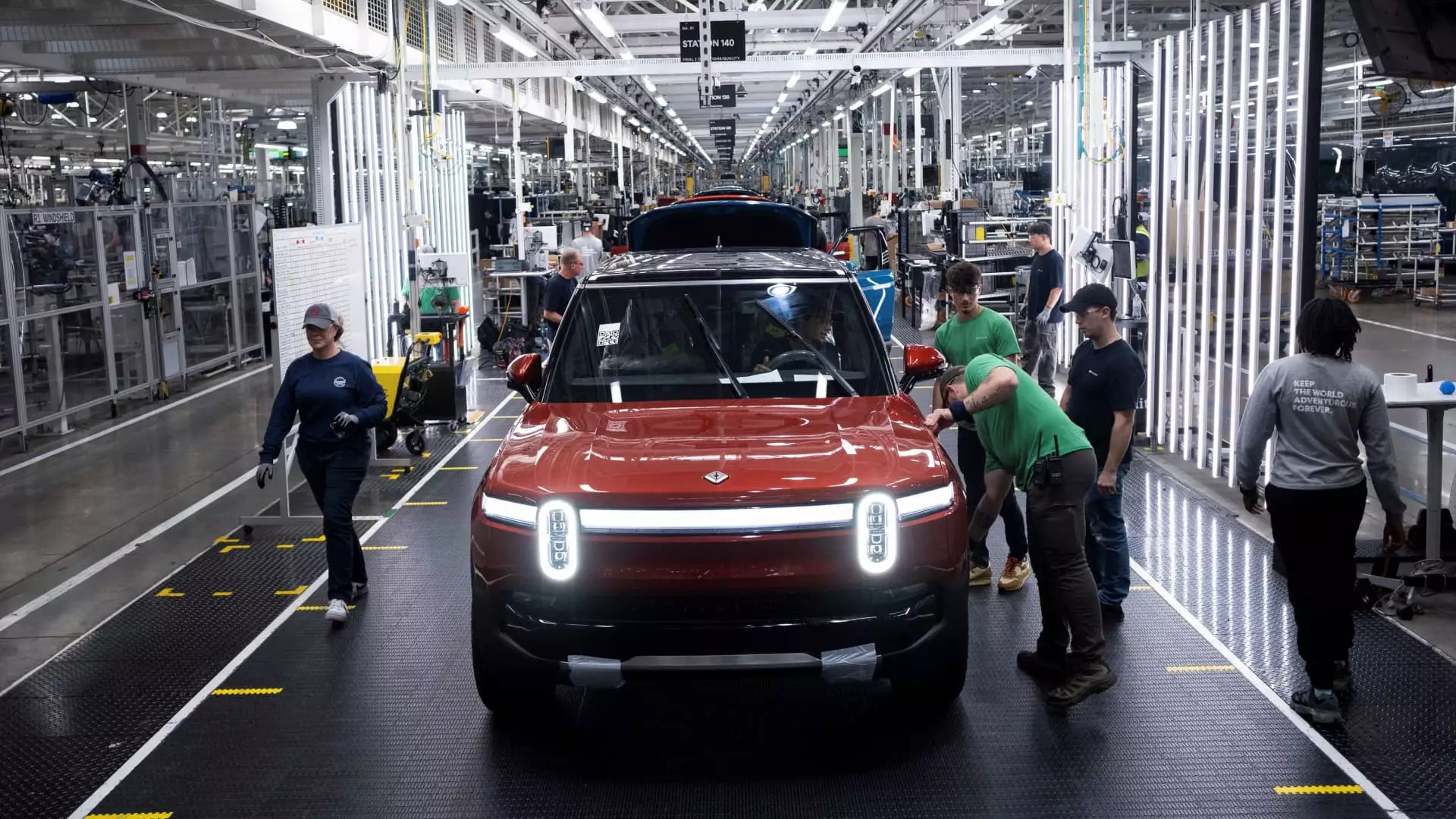Rivian Automotive, an emerging player in the electric vehicle (EV) industry, has recently experienced notable challenges that have compelled the company to revise its earnings forecast for the year. After reporting disappointing third-quarter results, Rivian’s revenue fell short of market expectations by a staggering margin, with the company missing estimates of both earnings and revenue. The adjusted loss per share was pegged at 99 cents, exceeding the anticipated 92 cents, while revenue amounted to only $874 million, contrasting sharply with the forecasted $990 million. This disappointment did not go unnoticed by investors, as Rivian’s stock initially dipped before recovering slightly in after-hours trading.
Rivian’s new financial guidance reflects a serious concern for its long-term viability. The automaker is now forecasting an adjusted earnings before interest, taxes, depreciation, and amortization (EBITDA) loss ranging between $2.83 billion and $2.88 billion for the year, up from a previously anticipated loss of approximately $2.7 billion. However, the company has held firm on its objective to achieve what it describes as a “modest positive gross profit” by the end of Q4, a goal that is generating palpable interest from investors and market analysts.
Financial woes are compounded by operational challenges that Rivian is facing. The company had a gross profit loss of $392 million in Q3, although this represented an improvement compared to the previous year’s loss of $477 million. These figures indicate that while the company is making strides in cost management, it still grapples with significant hurdles. CEO RJ Scaringe emphasized that the current difficulties stem from supplier disruptions that have impacted production capabilities. He characterized the situation as a “short-term issue,” suggesting that Rivian anticipates overcoming these operational setbacks soon.
These disruptions have had a tangible impact on Rivian’s production capabilities, leading to a reduction in its annual output forecast from 57,000 units to between 47,000 and 49,000 units. Executives have stressed the importance of maintaining this revised range, providing some stability in a climate of uncertainty. This adjustment in production targets comes during the backdrop of launching Rivian’s second-generation “R1” vehicles, which are anticipated to undergo substantial redesigns and modifications to their internal components.
In light of these challenges, Rivian has also pursued strategic partnerships to bolster its future prospects. One significant development is the announcement of a collaboration with LG Energy Solution to ensure that Rivian’s upcoming R2 vehicle models, slated for release in 2026, are fitted with domestically manufactured battery cells. This partnership could potentially enhance Rivian’s supply chain efficiency while reducing dependence on external suppliers plagued by the same issues the company currently faces.
Market analysts have noted that this strategic relationship could bolster Rivian’s credibility and operational strength within the fiercely competitive EV market. RBC Capital Markets analyst Tom Narayan remarked that Rivian’s commitment to preserving its gross profit goals could positively influence stock performance, a sentiment echoed by multiple analysts considering the potential for investor confidence to rebound.
While Rivian’s recent earnings report raises questions about its immediate prospects, the company has not entirely lost sight of its long-term objectives. The commitment to achieving a positive gross profit in Q4 reflects a determination to rebound amidst adversity. As Rivian continues to navigate its operational and financial challenges, market observers will be keen to see how effectively the company can pivot towards profitability while ensuring a steady production pipeline.
As the electric vehicle market matures, Rivian’s ability to adapt to its current challenges and capitalize on strategic partnerships will be crucial in determining its sustainability and competitive edge. Investors will closely monitor the company’s maneuvers in the coming quarters, anticipating whether Rivian can transform its obstacles into strategic advantages and succeed in carving out a significant niche in the evolving EV landscape.

